Tokyo is a Michelin star studded city. There are hundreds of good restaurants. Here is a must check web-site for you, when you are planning to visit Tokyo. https://savorjapan.com/tokyo/?cid=awse_pc_yg_ss_us_31_02&gclid=CLX1pPnWmMoCFcEUHwodqYsCPAWhen Every restaurant, which you dream of, is here.
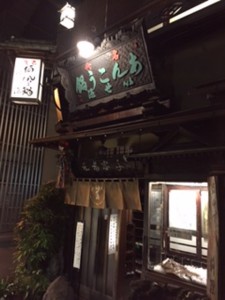 I love to eat at old establishments, many of which do not have Michelin star. I am glad for that. One of such restaurants is Isegen, a 185 years old restaurant where they serve anko-nabe (monkfish hot pot). I have landed at Haneda airport on December 26th last year. It was unusually warm day in Tokyo, but the idea of going Isegen for anko-nabe came first in my mind, when the airplane touched on the ground.
I love to eat at old establishments, many of which do not have Michelin star. I am glad for that. One of such restaurants is Isegen, a 185 years old restaurant where they serve anko-nabe (monkfish hot pot). I have landed at Haneda airport on December 26th last year. It was unusually warm day in Tokyo, but the idea of going Isegen for anko-nabe came first in my mind, when the airplane touched on the ground.
Anko-nabe is a regional hot pot, which has been enjoyed in Ibaraki Prefecture in Japan. Isegen is the only restaurant in Tokyo, which serves the signature monk fish hot pot.
Monkfish, anko, is an ugly looking fish. Here in America I see only tail meat is being sold at fishmongers. From the size of the tail meat the fish looks small in size. In Japan fishermen catch monkfish, which weighs about 13 to 60 pounds. The fish, which I had at Isegen on that night, was in hefty 55 pound.
For those who is interested in how to fillet/cut up such a huge monkfish, here is the website to check-out. It is in Japanese, so use lots of your imagination.
https://sea.everyone-shopping.com/cooking_method/clean_frogfish.html
Monkfish is a very economical fish in Japan. All parts, except bones and jaw, are edible, including 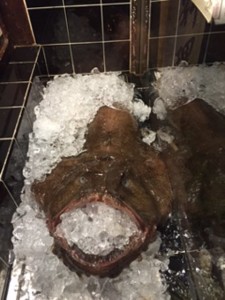 skin, stomach, liver, egg and fin. The different parts offer their own distinctive texture and flavor. I love the liver and the slippery skin.
skin, stomach, liver, egg and fin. The different parts offer their own distinctive texture and flavor. I love the liver and the slippery skin.
At Isegen fish pieces – every part as I have mentioned – are cooked in a special flavored broth (secret recipe) in a pot along with winter vegetables. After finishing fish and vegetables, every diner enjoys ojiya, richly flavored rice. A serving lady in kimono rushes to the table, and cooks the rice in the broth in which fish and vegetables are cooked. Eggs and scallions are added to make the rice taste heavenly delicious.
One drawback, which is actually a pleasurable experience, is that we sit on the tatami floor. We bend our needs and sit on top of it (I quit doing it), or cross our legs. Ladies, please wear slacks, but not skirt. Last tip is do not forget to bring with you your handkerchief – if you do not own it, grab a face towel from your hotel – and place it over your legs. It will catch whichever items – broth, bits of fish or vegetables – dropped on your legs for stain-free dinner.

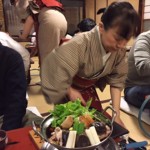
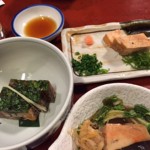


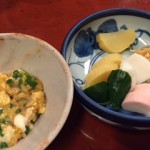 Want to try a good nabemono in NY city? Head to Hakata Tonton. Chef Koji’s Hakata Style hot pots- pork broth based – are the best in the city.
Want to try a good nabemono in NY city? Head to Hakata Tonton. Chef Koji’s Hakata Style hot pots- pork broth based – are the best in the city.
Want to try a nabemono hot pot at home? You can find a Tuna and Leek Hot Pot recipe, negima-nabe, in The Japanese Kitchen. Page 393-394. I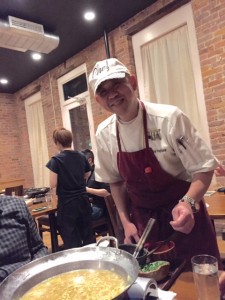 tadakimasu! (Bon Appetit!)
tadakimasu! (Bon Appetit!)
